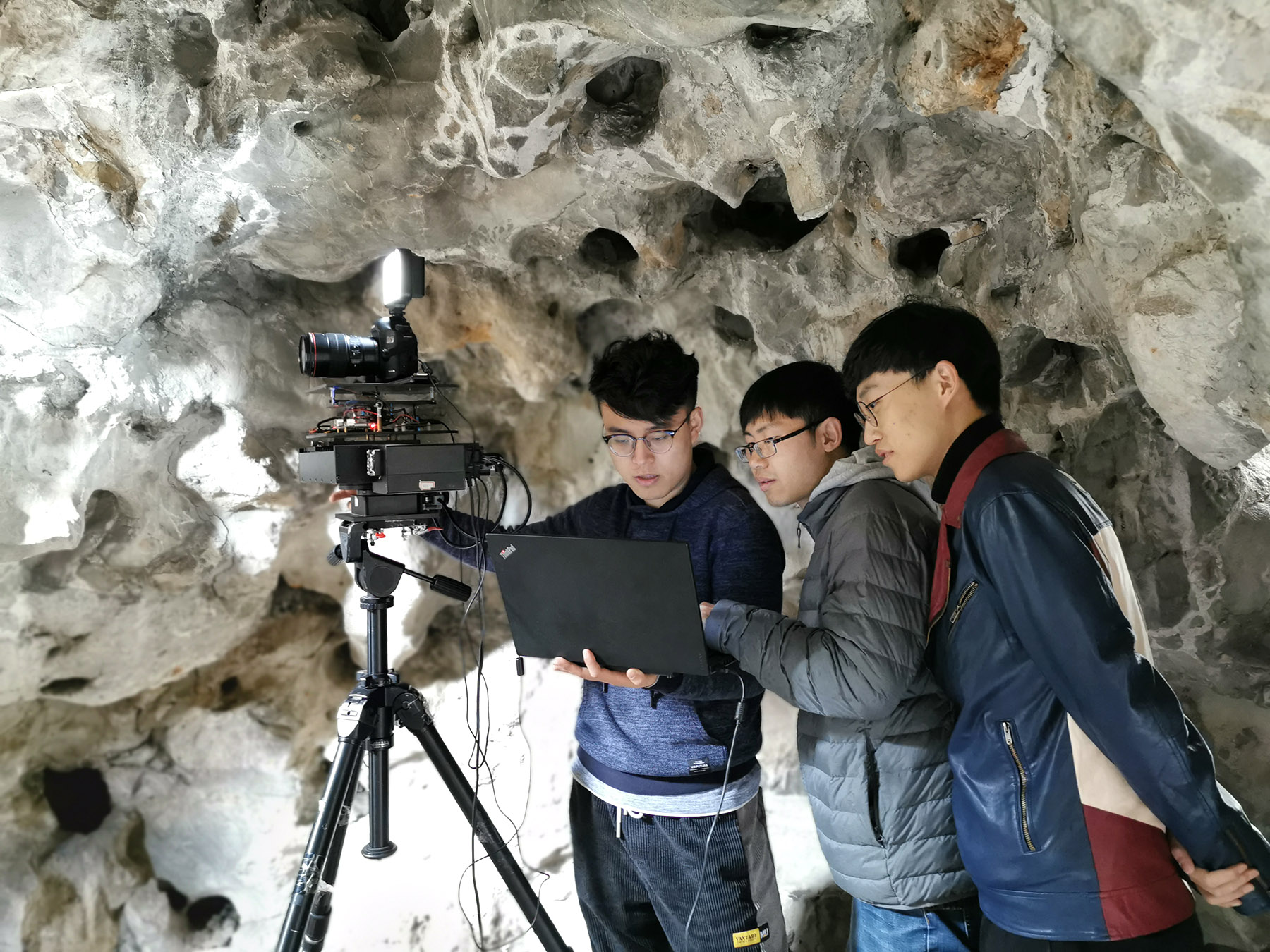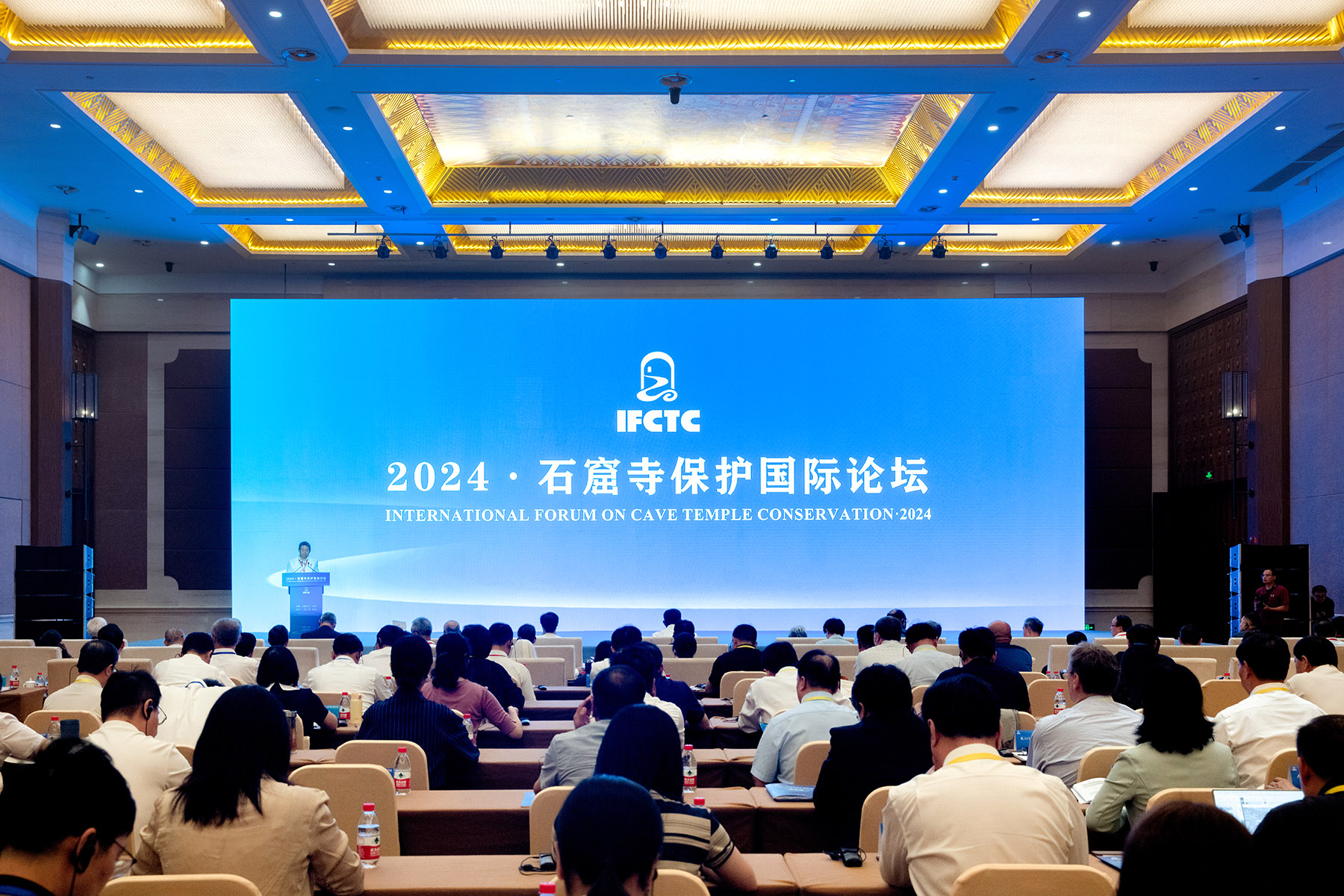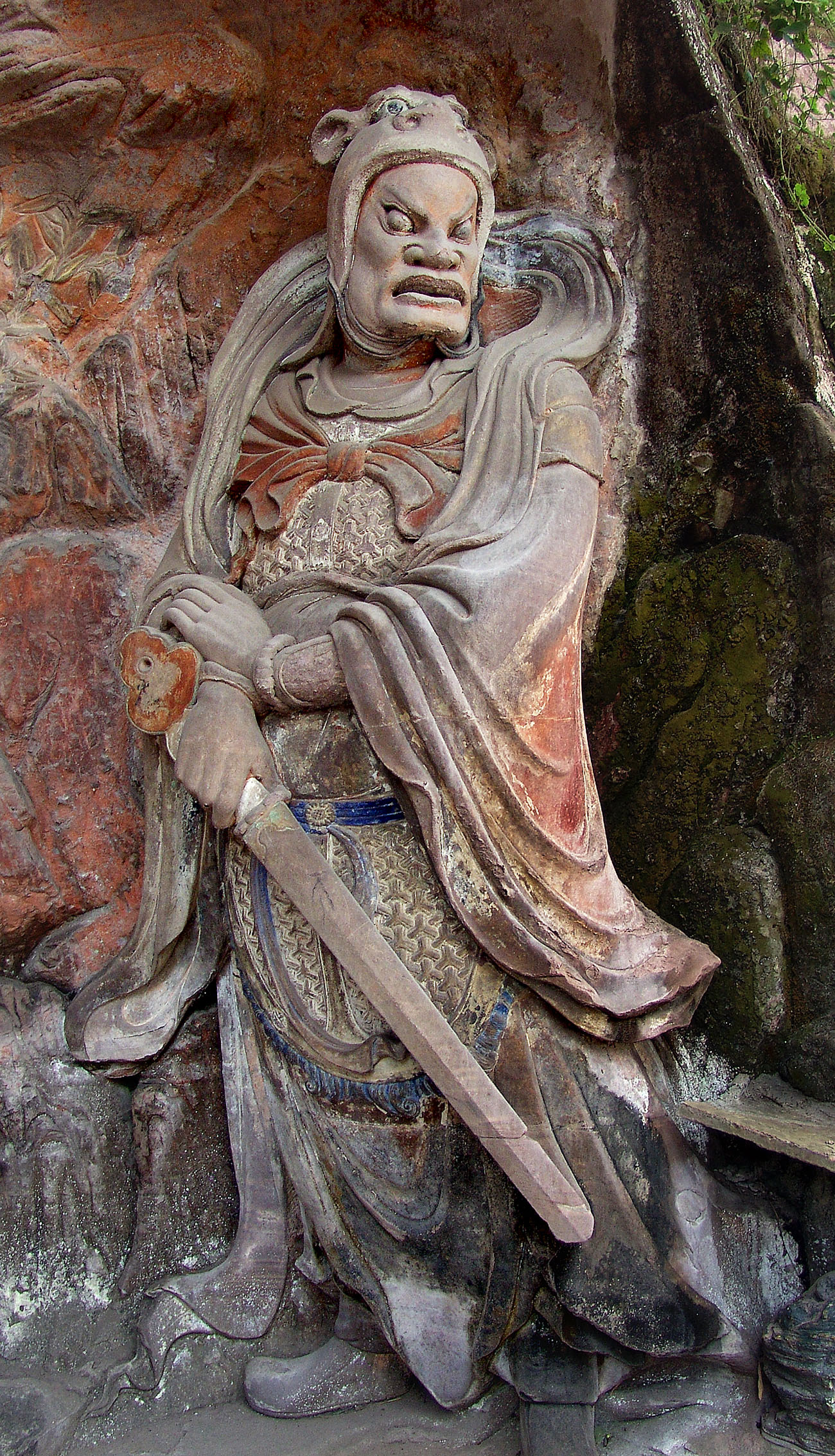Forum highlights remarkable progress in conserving cave temples, report Wang Ru in Dunhuang, Gansu province, and Ma Jingna in Lanzhou.

In mysterious caves or on steep cliffs, people can view marvelous Buddhist statues appearing to serenely survey all life, while delicate murals often portray Buddhist sutras. Together, they form cave temples — a special cultural landscape embodying the reverence of ancient people for divine blessings.
China boasts many dazzling cave temples, including the Mogao Caves in Dunhuang, Gansu province; Dazu Rock Carvings in Chongqing; the Longmen Grottoes in Henan province; and the Yungang Grottoes in Shanxi province — all UNESCO World Heritage Sites.
Through more than seven decades of efforts, the major risks of China's important cave temples have been eradicated, says Guan Qiang, deputy director of the National Cultural Heritage Administration at the 2024 International Forum on Cave Temple Conservation.
READ MORE: Guardians of the Great Wall
"We have achieved remarkable progress in exploring the protection and restoration of cave temples, consolidation of supporting mountains, management of the surrounding environment, digital preservation and monitoring. … Our ability to protect cave temples has significantly improved," he adds.

In the spotlight
Cave temples were spotlighted during the forum held in Dunhuang in August, bringing together several hundred experts and cave temple professionals from 16 countries to discuss issues like the protection, management and studies of cave temples.
According to Song Xinchao, chairman of the Chinese National Committee for the International Council on Monuments and Sites, there are currently 5,986 cave temples and cliff statues in China, occupying 24.5 percent of the immovable stone carving cultural heritage sites across the country.
He says besides famous large-scale cave temples like the UNESCO World Heritage Sites, many medium and small-sized cave temples are lesser-known but pose great challenges to conservation endeavors.
"Among the 5,986 cave temples and cliff statues in China, there are only about 600 belonging to national-level or provincial-level key cultural relics protection units. That means most of them are lower levels in terms of protection efforts and present challenges to our conservation efforts," says Song.
He Xiaodong, director of the cultural relics protection department of the Sichuan Provincial Cultural Heritage Administration, says Sichuan has 2,134 cave temples — the largest number nationwide. Most of them are medium and small-sized since they are often scattered in a wide suburban area at a relatively small scale within each cluster.
As a result, they are vulnerable to theft and human destruction. "In the past, thefts of cultural relics from such temples occurred. Moreover, the folk belief that decorating cave temples was auspicious was popular among the public. Therefore, many people went to color them with pigment or paint in the 1980s and 1990s, leading to the destruction of cultural heritage," says He.
In recent years, the situation improved with projects to crack down on criminal activities on cultural relics and change of people's awareness, but being large in number and lacking grassroots heritage protectors means protection is by no means easy work, says He.
Moreover, rain frequently occurs in Sichuan, leading to a moist climate that accelerates erosion of stone statues and murals. Also, Sichuan's cliff statues are mostly built on sandstone, which has a loose structure that makes them vulnerable, he adds.
Considering they are often located in villages, the idea of combining cave temple protection and management and rural vitalization has formed. Through improving infrastructure and building facilities, the temples can be better preserved, thus helping to promote the local economy.
"We have done a lot of work. Based on protection, like installing protective facilities and building supporting facilities for tourism, it becomes a tourist attraction, driving the local economy for better protection," says He.

Protection is the key
A highlight of Sichuan's protection efforts, according to Pu Xin, deputy director of the Sichuan Provincial Cultural Heritage Administration, is the thousand-Buddha statues on a cliff of Wolong Mountain in Mianyang, Sichuan, which is among the first batch of the province's nine trial sites to be protected through rural vitalization.
"Originally built during the Tang Dynasty (618-907), the cluster is of small scale. But it has clear inscriptions indicating its construction time. The statues are of typical Tang style and have high artistic and historical value," says He.
Pu says local and provincial governments have invested nearly 10 million yuan ($1.41 million) to carry out a series of projects protecting the statues and facilitating tourists.
"We have made protective endeavors like reinforcing the slopes on the mountainside, building tourist facilities like toilets and rest areas and an exhibition hall to introduce the statues. Although the site used to be open to the public, it was lesser known with poor conditions, but now it is gaining in popularity," says Pu.
The residents welcome these changes since they are receiving better infrastructure and opportunities to benefit from tourism, he adds.
In the neighboring Chongqing municipality, a project was launched to protect 69 medium and small cave temples — consolidating the dangerous rock formations in some grottoes, adding eaves for caves, improving pedestrian walkways and protecting the drainage ditches around buildings, according to Xing Jun, deputy director of Chongqing's Cultural Heritage Administration.

Let the tech work
Some scholars elaborated on the role technology can play in protecting cave temples. For example, Feng Wei, a computer science professor at Tianjin University, introduced the application of artificial intelligence in inspecting minor changes in cave temples, a significant step in preventive conservation.
According to Feng, preventive conservation means periodically observing the state of cultural relics to see if they have minor changes, then analyzing the reasons for such changes and working on the external reasons so that changes can be relieved or stopped, thus protecting the relics.
However, cultural relics, movable or immovable, are characterized by their long life span and slow changes that are not visible in a short time, says Feng. That poses challenges for preventive conservation at the beginning.
Feng and his team then studied the timely detection of minor changes in cave temples and invented an AI-empowered method to accomplish this task, which can also be used for other types of cultural relics.
They believe comparing images of the same cultural heritage is the most common and effective way for observing changes and analyzing the three fundamental elements that can lead to changes in imaging — camera, light conditions and changes in the cultural relics themselves.
As a result, they have worked to control the former two elements to make them the same as before so that the new image can be compared and judged as to whether the relics have changed.
But it is not easy to keep the two conditions unchanged since "minor changes in each one can lead to a big difference in images", says Feng. For example, the fast upgrading of cameras makes it difficult to find the same camera from decades ago to take a picture. That's where AI comes in.
"AI can learn from the historical image and create a virtual camera lens model. Then, the virtual lens can cooperate with modern cameras to restore the original camera and its pose when taking the old photo, keeping the camera factor unchanged," says Feng.
With the help of AI, the original light conditions can also be reproduced.
ALSO READ: Dedicated to a new age of restoration
The team invented the equipment to finish the task, which included a robotic platform, a specialized camera and a custom-made controlling software. "We put the equipment in place and use a historical image to lead the robotic platform to restore the camera to the original pose and reproduce the light conditions to take a new photo. Then AI can compare the changes," says Feng.
Now, his team has fixed more than 100 point locations in 11 caves among the Mogao Caves, taking photos every year for more than a decade to follow the state of change. "In a cave with murals of more than 100 square meters, we can discover changes as small as a dozen microns," says Feng.
They have discovered during more than a decade's time that in some areas "cave diseases" are frequent, the average deterioration speed of the murals in the caves open to the public is over 10 times faster than those not.
"This has provided scientific data to support people's decisions in creating a balance between developing tourism and protecting the cave temples," says Feng.
He believes AI also has a bigger role to play in the knowledge related to cave temples. "The materials about cave temples may not be easy to understand for many tourists who often require the help of tour guides. But AI may help in creating new explanation devices and help facilitate education about the caves," says Feng.
Contact the writers at wangru1@chinadaily.com.cn


